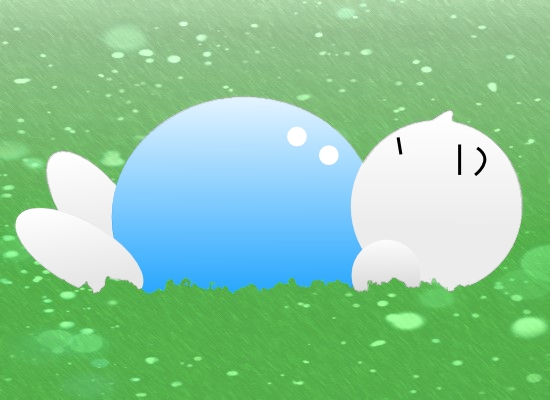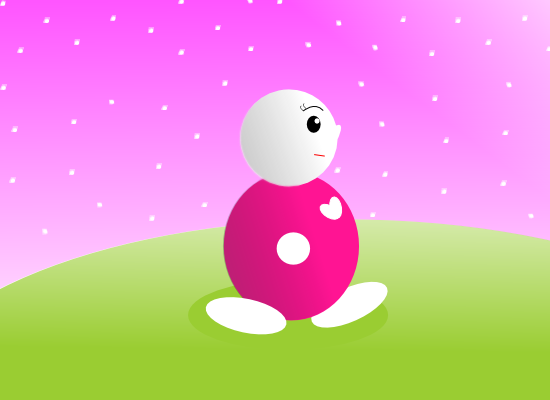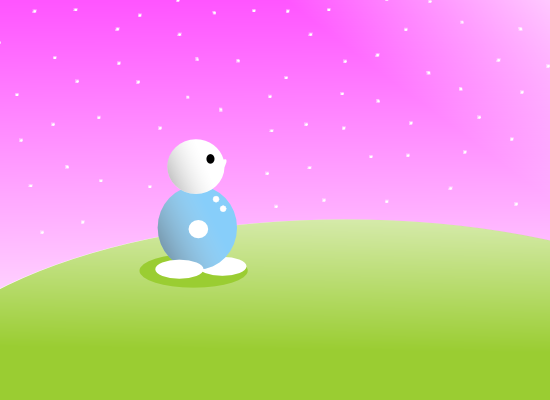อ่านการ์ตูนข้อคิดดี ๆ ภาพคำสอนสวย ๆ บทความสนุก ๆ หาอ่านยาก ^_^
|
|||
Cartoon Dhamma - For You The Newcomer - For French Version: https://atenlightenment.wordpress.com/2014/11/24/pour-toi-le-nouveau-venu/ - For English Version: https://atenlightenment.wordpress.com/2013/08/27/for-you-the-newcomer/ - เวอร์ชั่นภาษาไทย: https://dhammaway.wordpress.com/2011/06/24/for-you-newcomer/ The truth is that Dhamma is extremely close to us. It is so close that we can say it is about ourselves. The Dhammas aim is simple How to be free from suffering (dukkha). When we study Dhamma, we should look directly into where suffering is, how suffering arises and how to end suffering.  To be successful in the study of Dhamma means to practice until reaching the end of suffering, not about the amount of knowledge acquired or the ability to explain Dhamma beautifully! The truth is that the suffering we experience lies within our body and mind. The field of study for Dhamma is actually inside of us. Instead of looking to the outside world for learning, we may look inwardly at our own selves.  The method is simple: just to observe our body and mind closely. We can start by simply observing our physical body. The first step is to relax. There is no need to be tense or to think about practicing Dhamma. We just observe our own body. It does not matter how much we can notice, we just observe as much as we can.  Once at ease, we can be aware of the whole body. We watch it as we might watch a robot
walking, moving, chewing, swallowing food (adding some material thing to the body), and excreting waste. If we can watch this robot-body which we call ours performs its tasks, as neutral observers we will eventually see that the body is not really ours and moves of its own accord. It is only a material object, which never stands still and never stays fixed. Even the components of this robot change constantly, with substances moving in and out all the time,  such as breathing in and breathing out, consuming food and drinks and excreting waste. Thus, the body is just a group of elements (earth, wind, fire, and water) which is not permanent. By simply observing the body, our clinging to the wrong view that the body is ours will eventually fade.  Then, we will see that there is some other nature (that we call mind), which knows this body and which resides within it. Once we can see that this body is just a group of constantly changing elements and does not belong to us, why dont we try to observe that which is hidden inside our physical body. In this way, we can learn about ourselves more deeply and in greater detail. That thing which is hidden inside of us can easily be seen. It is the feelings of happiness, unhappiness, and neutrality.  For example, as we observe this robot-body moving around, soon we will see aching, pain, thirst, hunger, and some other discomforts arising from time to time. However, once the unhappy feelings pass, we will again feel happy for a time (happiness arising). For example, when we are thirsty and feeling unhappy, we drink some water and the unhappiness caused by the thirst is gone. Or if we are sitting for a long time and begin to ache, we feel unhappy. Once we adjust the body position, the discomfort goes away and the unhappiness disappears with it (happiness arising).  Sometimes when we are ill, we can be aware of physical suffering continuously for a longer period of time. For example, when we have a toothache for several days, if we closely monitor the pain, we will discover that the discomfort arises from somewhere between the tooth and the gum. However, these objects (tooth and gum) themselves dont produce the pain.  The body is like a robot which does not feel pain and suffering, yet the discomfort resides inside the body. We will see that these feelings of happiness, unhappiness and neutrality are not part of the body, but something that can be felt and observed within the body, just like the body itself. From there, we can study ourselves in greater detail. We can closely observe that when physical suffering arises, it is our mind which reacts negatively.  For example, when we are hungry we get upset more easily, when we are tired we get angry more easily, when we have fever we get agitated more easily, or when our desires are not met we get irritated more easily. We can be aware of the anger that arises when faced with physical suffering. On the other hand, when we see beautiful sights, hear pleasing sounds, smell pleasant fragrances, taste delicious flavors, feel a soft touch or a comfortable temperature not too hot and not too cold or think pleasant thoughts,  we will feel liking and satisfaction with such sights, sounds, fragrances, tastes, touches, and thoughts. Once we are aware of pleasant and unpleasant feelings as they arise, we can similarly become aware of other feelings such as doubtfulness, vengeance, depression, jealousy, disdain, cheerfulness, and tranquility of mind as well. When we study these feelings further, we will begin to realize that they themselves are not stable.  For example, when we are angry and become conscious of the anger, we can detect the constant change in the intensity of this anger. Eventually, it will fade and disappear. Whether or not the feeling of anger disappears, what is important is that the anger is seen as an object to be observed, not belonging to us. There is no us in the anger. We can observe other feelings with this same understanding.  At this point we can see that our body is like a robot. And the feelings of happiness, unhappiness, and all others are just objects to be observed and do not belong to us. The more we understand about the process of our minds, the more evident is the truth that suffering only arises when there is a cause. We will find that there is a natural impulse, or force within our mind.  For example, when we see a beautiful woman, our mind will start to develop a liking toward her. This creates a compelling force toward that woman. Our mind will in turn wander toward that woman, seeing only that woman, and we forget about ourselves. (Regarding the subject of mind wandering, a person who has only studied from textbooks may feel puzzled. However, if a person really gets into practice, he/she will see just how far the mind can wander, just as described word-for-word by the Buddha Himself.)  Or when we have doubtful thoughts about how to practice Dhamma, we will see that we have the urge to find an answer. Our mind will then wander into the world of thoughts. This is when we forget about ourselves. The robot-body is still here, but we forget about it, as if it has disappeared from this world. There may be other emotions inside as well; however, we might not be aware of them because our mind is busy searching for answers to the doubtful thoughts.  If we observe ourselves more and more, we will soon understand how suffering occurs, how to be free from suffering, and how it feels to be without suffering. Our mind will rectify itself without having to think about meditation, wisdom, or the path that leads to the end of suffering.  We may not be well-versed in Dhamma or Pali words, but our minds can still be free from suffering. And, even though we still experience suffering, it will be less intense and for a shorter period of time. Story by Venerable Pramote Pamojjo Translation: //www.dhamma.com/en/ This cartoon is just some part of the book "The Part to Enlightenment I" //www.dhamma.com/wp-content/uploads/2013/05/The-Path-to-Enlightenment-I.pdf And Recommended Book (for further study). - To See the Truth //www.dhamma.com/wp-content/uploads/2013/05/To-See-the-Truth.pdf All books written by Luangpor Pramote are in Thai, published and distributed as free gifts of Dhamma, with the intention of preserving the Teachings of the Lord Buddha for generations to come. These books are translated into English and other languages by different people with permission from Luangpor Pramote. However as Luangpor is not fluent in other languages and therefore cannot verify them, please bear in mind that despite our efforts there can be errors and misinterpretation by translators. |
อาณาจักรสีเขียว
 ผู้ติดตามบล็อก : 8 คน [?] ผู้ติดตามบล็อก : 8 คน [?]
ขอบพระคุณที่เข้ามาเยี่ยมชมคะ
แล้วแวะเข้ามาเยี่ยมชมที่บล็อก ลิงค์นี้กันนะ http://dhammaway.wordpress.com แนะนำมากๆ Group Blog All Blog
|
||
| Pantip.com | PantipMarket.com | Pantown.com | © 2004 BlogGang.com allrights reserved. | |||

